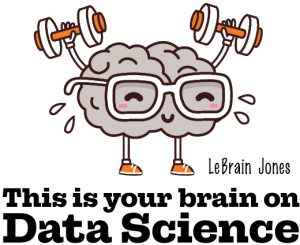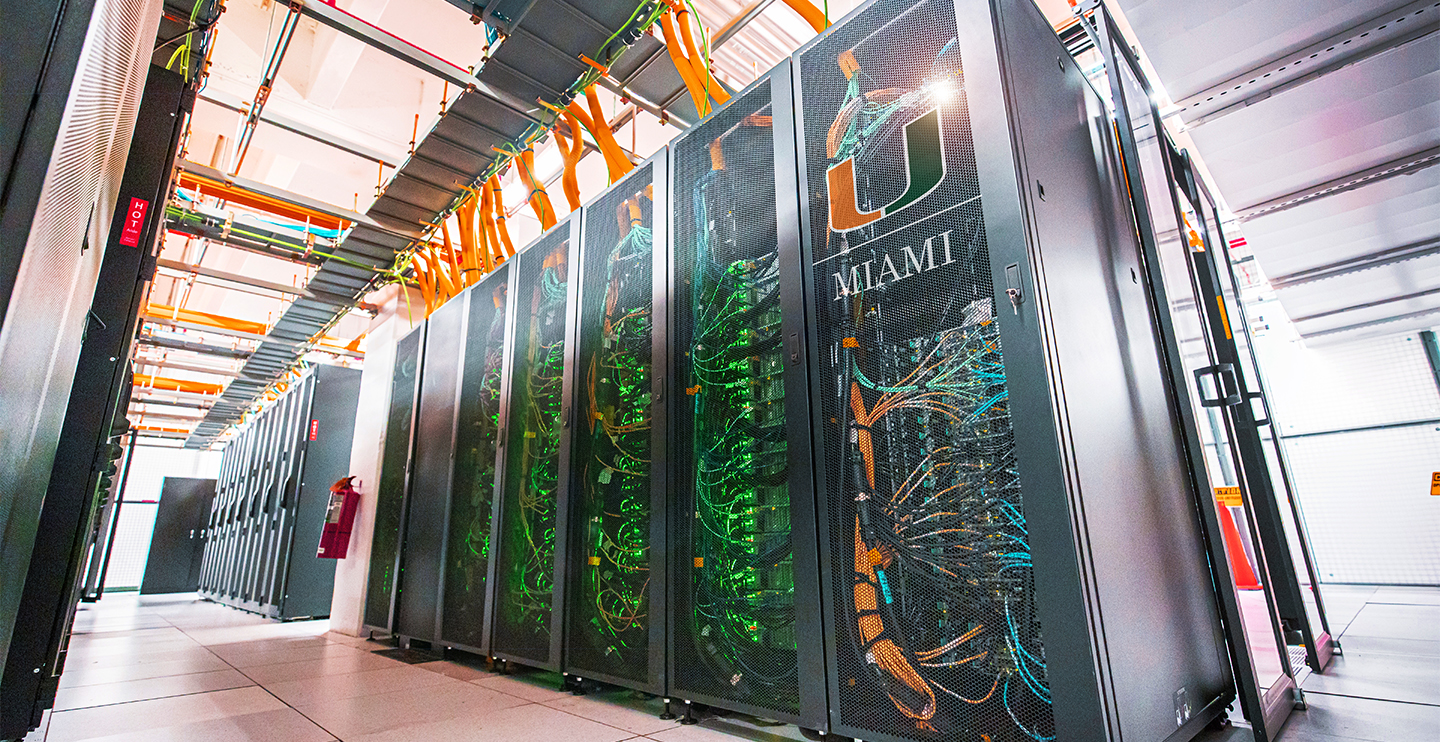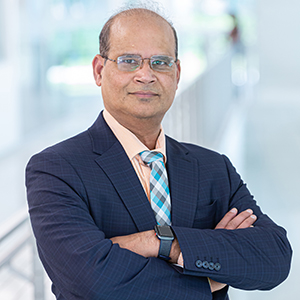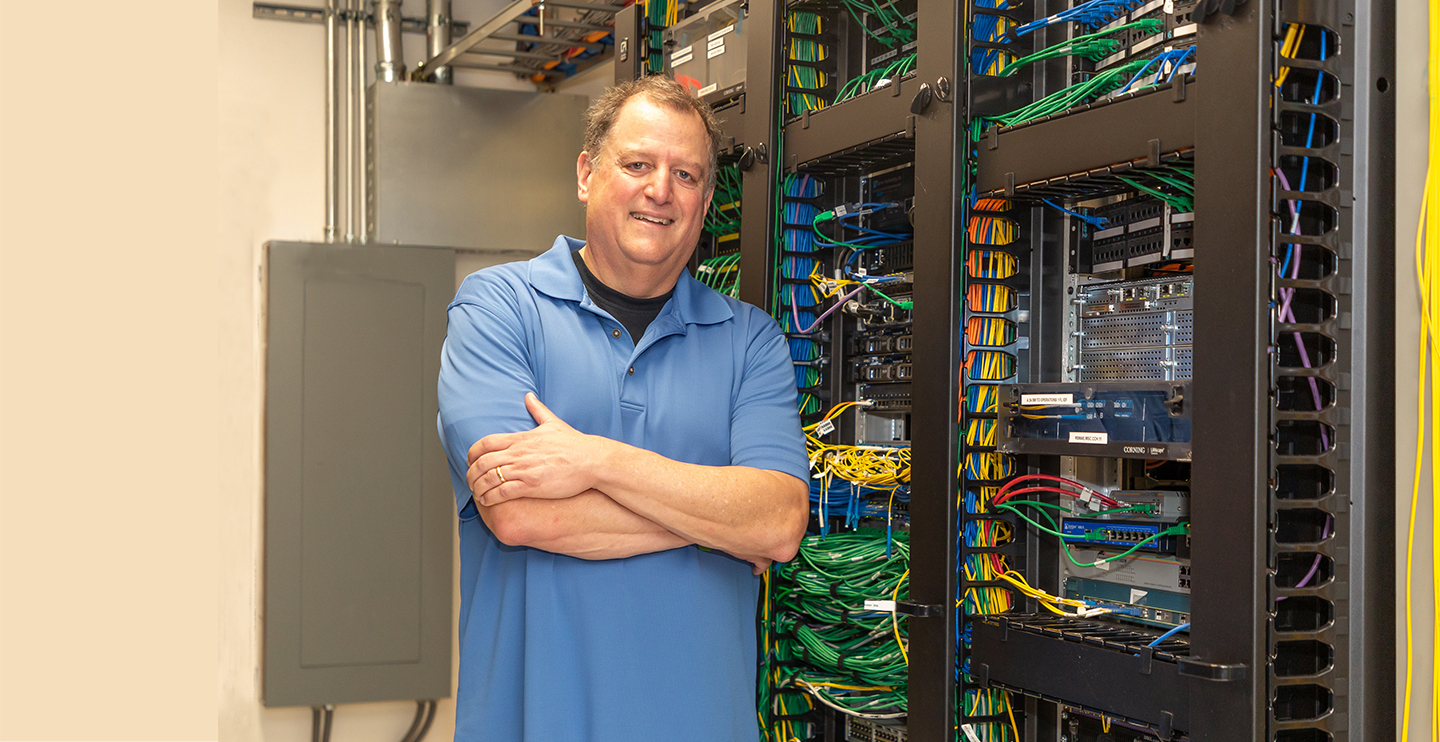At the University of Miami Frost Institute for Data Science and Computing (IDSC), a quiet revolution is underway—one that’s reshaping the way researchers across disciplines use technology to explore complex questions. At the heart of this effort is Dr. Ravi Vadapalli, Director of Advanced Computing Systems (ACS) at IDSC who, along with his team, is helping bring high-performance computing (HPC) tools and training into the hands of scientists, engineers, and even humanities scholars.
“Many researchers have the ideas, but they need the right tools and training to turn those ideas into discoveries.”
Think of HPC as a supercharged engine for solving big problems, like predicting hurricanes, analyzing DNA, or modeling global shipping routes. Traditional computers just don’t have the speed or memory needed to handle these data-heavy tasks, which is where HPC comes in.
“Many researchers have the ideas, but they need the right tools and training to turn those ideas into discoveries,” Dr. Vadapalli said. To support this, his team has developed a next-generation HPC testbed that acts as a proving ground for new research and computing capabilities.
The testbed isn’t your average computer setup. It includes two “racecars” for data: high-powered servers (HPE DL380a) with 96 processor cores and two terabytes of RAM each. It also features the latest technology for AI and scientific computing, NVIDIA H100 GPUs, as well as another server (Dell R760A) with a different processor setup and an NVIDIA L40S GPU, adding flexibility for a variety of workloads.
This hardware allows researchers to test and fine-tune applications before scaling them up across larger systems. According to Dr. Vadapalli, “It’s a sandbox where innovation happens.” The testbed is already in use across different departments at UM, with some surprising findings.
Dr. Benjamin Kirtman, Academic Dean of the Rosenstiel School of Marine, Atmospheric, and Earth Sciences, saw a 48x improvement in running his climate prediction models compared to older systems. Rosenstiel School professor Dr. David Nolan tested the widely used Weather Research and Forecasting (WRF) model and found it ran three to four times faster. Dr. Juan Carlos Villaseñor-Derbez, assistant professor at the Rosenstiel School and IDSC core faculty, used the system to analyze global shipping and piracy—tasks that previously crashed due to memory limits. Now, they run smoothly. Dr. Daniel Isom, assistant professor at the Miller School of Medicine, reported at least a 2x speed up using tools like ColabFold for protein structure prediction.
“This is exactly the kind of feedback we need,” Dr. Vadapalli said. “When researchers see a 4x or greater speed up, they realize what’s possible with better infrastructure.”
The success of the testbed isn’t just benefiting academic research; it’s potentially shaping future investments. Based on these early results, the team hope for a university-wide update of its main computing cluster, Pegasus, using the testbed as a model. The popularity of the H100 GPUs and cost-to-performance ratio of the new servers make a strong case for the upgrade.
The possible applications and impact reach even further, becoming essential for winning funding. Dr. Vadapalli and his team created a “recipe” to guide researchers through the process of using it to make computing proposals stronger, more compelling, and more realistic. “Scientists often understand their research, but they need help articulating how it fits into our computing environment,” he explained.
One of the most innovative aspects of Dr. Vadapalli’ s work is outreach beyond traditional science and engineering fields. He recently hosted an NSF-funded workshop (NSF Award #2346318) that included faculty from historically Black colleges and universities (HBCUs), not just from STEM, but also from English and communication departments. With the rise of AI and machine learning, fields often left out of the conversation about HPC are becoming more relevant. For example, English instructors are exploring how tools like ChatGPT can help students improve their writing by comparing AI-generated essays to their own work.
 One clever solution the IDSC team developed is “LeBrain,” a chatbot powered by ChatGPT. It provides AI support to help researchers get answers without always needing a human expert.
One clever solution the IDSC team developed is “LeBrain,” a chatbot powered by ChatGPT. It provides AI support to help researchers get answers without always needing a human expert.
“Too often, tickets are submitted for issues that are already covered in documentation,” Dr. Vadapalli said. “LeBrain brings that knowledge directly to users, saving time, and letting staff focus on more complex problems.”
ACS also recently migrated to a new system called ServiceNow (SNOW), which is already showing benefits. It improves collaboration with the university’s IT department and categorizes support requests into useful groups, like software, hardware, and outreach. This, in turn, allows for better tracking and more strategic resource planning.
Dr. Vadapalli’s work also emphasizes training and inclusivity. ACS has helped launch several new educational efforts to help train the next generation, including a National Science Foundation-funded traineeship (NSF Award #2509533) to support PhD students using computing in fields like marine science and chemistry. New courses like Intro to Advanced Computing for Engineers and Survey of Data Science for Bioinformatics have been introduced and partnerships with local universities are helping to build a regional cyberinfrastructure community. In addition, programs for K-12 students are serving to encourage early interest in AI and data science.
The work Dr. Vadapalli and his team have undertaken is incredibly vital to shaping the future of data-based learning. “Our goal is to create a pipeline, from kindergarten to university, that prepares students thrive in a data-driven world,” he said.
by Kimberly Bobson Feldman





